The Cacao Muse: How Storytelling Brings Together Chocolate, Health, Creativity, and Sustainability
Author interview with Birgitte Rasine on the deep research that went into her children's novel that she is serializing here on Substack ... and so much more ....
In addition to working as a writer and speaker in this niche, she’s also got a parallel creative and wellness journey in which she deeply explores the world of chocolate. Yes, chocolate! She’s a chocolate taster and judge who speaks about the benefits of chocolate for individuals and the world. And she’s also the author of a children’s novel called "The Jaguar and the Cacao Tree,” which she describes as, “The Chronicles of Narnia and The Golden Compass crushed to bits and blended, then dipped in chocolate.” I’ve been excited to watch as she begins to serialize this novel here on Substack
while also sharing deep knowledge about the health benefits of chocolate, “the cacao-climate connection,” and so much more.I loved the opportunity to be a part of her holiday tour in December, where each day she brought us work (interview, guest post, something) from another talented Substack writer and paired their interview with her chocolate recommendation. It was so much fun. I know December is always a busy month and we don’t always read all we might want to so if you missed this do go back and check out some of the posts. Here’s mine:
I’m thrilled to have the opportunity today to bring you an interview with Birgitte in which we not only learn a little about this beautiful world of chocolate but also get the chance to explore how working on the novel and the new Substack is related to creativity and wellness.
Hi Birgitte! I’ve been so excited to watch as you launch this new Substack, The Cacao Muse, and curious about the whole story behind that launch. I noticed that you launched with quite a bit of content on there already, almost like releasing a brand new website that's pretty fleshed out.
Can you share a bit about your decisions and process when it comes to launching this new one ... and perhaps how your experience with your first Substack, The Muse, led to that choice?
The Muse was my original author’s newsletter, which I wrote for a few years via an email marketing service. I had signed up on Substack 3 years ago but was too busy with client work and the stupid pandemic to launch anything. I could barely keep up writing a short newsletter every month. At the end of 2022, the client cut their budget and I was essentially forced to take some time off. That’s also when the generative AI tsunami hit. I immediately saw what that meant for creatives, and I got mad. When I get mad, I start writing. (I mean I write all the time but I especially write when I’m mad. Hell hath no fury like a writer scorned by AI!)
The Cacao Muse started as a poetic Instagram account… which I might just resurrect (she says, feeling a little nauseous at the thought of having to fire up Instagram again). I have been doing tabletop photography of the chocolate award entries that I judge, and have always wanted to showcase them. I was originally planning on doing so on Instagram, but when I saw the potential of Substack… suffice it to say, Instagram, love ya lots but ya just don’t measure up!
I hint a little at this in my latest post on The Muse, titled “Manufacturing loneliness,” but writing about the nature, function, and ethics of generative AI and its impact on the creative professions can really gut you. We’re moving through a profound technological and cultural shift in our society as a result of this AI wave, at a time that’s already rending our world asunder on so many foundational fronts, so it’s all we can do to hold our minds and spirits strong and support one another.
When you eat too bitter a melon, you need a little mango. When you dress in all black, it’s always good to throw on a splash of color. When you listen to too much punk rock, your ears could use a little Enya. You need that counterpoint. The Muse isn’t just about generative AI of course, but she needs her twin sister The Cacao Muse to melt away those stresses, the muscle pains, the existential crises.
I can’t tell you how much fun it was to write all the debut posts for The Cacao Muse. Kathryn, you yourself noted it when you first saw it, so yes that unbridled joy really does come through!
Yes, the joy really comes through. And it makes a lot of sense to me that the lightness, richness, and delight of chocolate is a healthy counterbalance to the intensity of the AI work.
That said, it’s not always a light topic … you delve really deep into the history and mythology of chocolate, its health benefits and how it can be an entryway to learning about better treatment of our bodies, and the relationship of the industry to climate change and issues of sustainability.
Chocolate is fun but those are big topics … which you first really explored through your novel "The Jaguar and the Cacao Tree.” Why did you ultimately choose a novel format to share the story of chocolate?
This goes back to the midlife crisis I had in my mid-twenties. (I had mine early, so I had to call it my quarter-life crisis.) I was working for a high tech PR firm in Palo Alto, following my Hollywood career which I left in part because of a red carpet experience gone wrong (should I do a post about that??), and it suddenly hit me that I’m doing nothing whatsoever of value with my life. That’s how I pivoted to sustainability. Long life story made very short, a few years later I started a green media firm and produced a docudrama in Belize about sustainable forestry programs. I would often find myself sitting in fancy conference rooms in Europe, Latin America, Washington DC, and the UN HQ in New York, rubbing shoulders with executives from large corporations and NGOs discussing the climate, human rights, and sustainable development goals. I recognize the need for talks, but I was getting a sinking feeling there would never be enough action.
So I stopped going to the events and decided to engage the public through story. You know that famous quote from Sir David Attenborough—“No one will protect what they don't care about; and no one will care about what they have never experienced.” In other words, how can we expect people to change their ways and habits and protect the natural world if they don’t have a relationship with the land and the waters? Yet we also can’t expect everyone to just pack up and move to the back country or live on a farm. This is where we storytellers come in. We can whisk you away to faraway lands, immerse you in exotic cultures, even take you back through time—or forward to an alien future. We can make you experience and feel things it would otherwise take a lot of time, energy, and money to experience.
Oh right, you asked about the novel format. That one is simple—I’m a literary author. I’ve done a lot of other things in my life but at the core of it all I’m a storyteller. So there was never any question it had to be a novel. Short story would have been too short.
People ask me, why chocolate though? Why food? Well, food is the most direct connection anyone anywhere has to the land, regardless of their ethnicity, culture, geography, faith, or socioeconomic status. In other words, we all need to eat. Food is sacred—I realize it’s far from that in many places, especially here in the U.S., but it should be sacred. Your body is a temple, right? Well, we’ve been desecrating our temples for decades.
So that’s why food. And why chocolate… because chocolate is the food of the gods. Both science and culture agree on that: the Latin name for cacao, Theobroma cacao, literally means “food of the gods,” and in the ancient Mesoamerican creation myths, Cacao and Corn were gifted to humanity by the gods. Some years prior I had written a book about the old Mesoamerican calendar—what most people know as the Mayan calendar—so I knew their creation myths. And also, because most self-respecting humans love chocolate. :)
A Hollywood career, a docudrama in Belize … it’s all so exciting! But I can also see how that kind of work could come with a lot of stressors, especially when you don’t see change happening. And I am right on board with you that storytelling is such a great vehicle for change.
What can you tell us about the process of originally writing that book? What were the biggest joys and challenges?
I wrote the first draft of The Jaguar and the Cacao Tree in about six months. The biggest joy was getting to know my characters and their families, researching chocolate (tough job but somebody’s gotta do it!), and writing in cafés. I’m the kind of writer who loves a blank page. I thrive on the act of creation. Of coaxing a story out of the ether and making it blossom onto a page. For me there is nothing more profoundly rewarding than those initial blushes of creation, breathing new life into being. We writers are alchemists… we turn pure potential into form. We are the quantum physicists of story, the sculptors of narrative, the choreographers of dialogue.
I faced three challenges in the publication of the novel. Originally, I signed with a startup publisher that was going to do novels for kids in the “Choose Your Own Adventure” format. I can tell you in no uncertain terms that if I never write another CYOA book it will be too soon. That format really takes the joy of crafting a story out of you, at least for me—because you end up focusing on maps and aligning the reader journey and the beginnings and endings of chapters and it’s a big Gordian knot. I’m not against non linear narratives, just please don’t make me write another CYOA book.
The second defining challenge was with the person with the final say over the manuscript, which was the publisher’s main investor. He read my manuscript, and rejected it.
Me: Umm, okay—on what grounds?
Him: It’s not academic enough.
Me: It’s a fantasy story about cacao’s history and mythology, for kids. Kids.
Luckily, I had inserted a termination clause into my publishing contract which the publisher had accepted, happily (I wouldn’t have done the deal otherwise. Note to all authors everywhere: make sure you can get your book back if you and your publisher fall out. Make sure there’s an explicit termination clause in your contract.)
So my book was now legally 100% mine to publish, or not publish, or whatever. My initial reaction was disbelief, then a bit of despair—I had just spent months designing a narrative labyrinth with zero income to show for it—there was no advance, remember this was a startup—and I faced two daunting options. Either I start the arduous process of finding an agent and publisher, or I go the indie route. Either way, I had to take the story out of that god-forsaken CYOA format, because most publishers just wanted a regular narrative. On this point I happily obliged myself, and ripped that CYOA right out of the story.
That decision was my third challenge—how do I publish this book? Not publishing at all was not an option; this book was too important and too meaningful. So I researched the market, attended a few pitch conferences, talked to a bunch of people in the business, and finally determined that for the sake of my mental health and well-being, I needed to see this book published on my own terms. No more other people dictating what form the narrative would take, no more investors rejecting it because “it’s not academic enough.” So I opted for the indie publishing route. The physical production was no issue, as I had done my Mayan calendar book and several shorter works. I can lay out a manuscript in my sleep now 😅. And that journey is how I discovered just how broken the publishing industry is, but that’s for another interview.
That’s definitely a journey and as an author who has worked in varied publishing relationships myself, as well as self-publishing, the realization that publishing this on your own terms was best for your own mental health really resonates for me.
The book is beautifully illustrated. What was the experience like working with the illustrator?
Haha, okay, I need to let that bird out of the cage: the illustrator is my mom. I’m the daughter and mother of artists. They are both fabulous, fabulous artists, especially the little one (I’m thinking about posting some of her work on my Substack soon). It was a beautiful thing to work with my mom. It was a very smooth, easy, and enjoyable process. I had a vision of the Black Jaguar’s eyes peering through a cacao tree, and that’s what we worked toward. There was never any other concept or sketch. I knew what I wanted, and my mom knew exactly how to make it come to life.
Oh I love that! Creativity through the generations. And how special to get to work together on something fun that you care deeply about.
The book is written in English, but it also has sections of brief Spanish and Itzà Maya dialogue with English translations. How did the language translation happen?
I speak a number of languages so the Spanish translation was easy. Now the Itzà Maya... that took a bit of work. There are not many native speakers left in the world. In my research I got in touch with a small non profit in Guatemala called Bio Itzà, whose mission is to “rescue the ancestral knowledge and traditions of the Itzá Maya culture and associated tropical forests in northern Guatemala.” The executive director and the school director of the organization were both very helpful in answering my questions about the Itzà Maya culture and their practices of forest stewardship. In fact, I based K’aax Itzà, the forest research station in the novel, in part on Bio Itzà. And it was Don Reginaldo Chayax Huex, the executive director, who ended up translating the Itzà Maya portions of the book. I sent them a sizable donation as thanks for their kindness and collaboration.
I really appreciate the attention you give to the detail of the work and it’s wonderful that you were able to support them with the donation as well. So, the book came out, it has some great reviews, and now you’re serializing it here on Substack.
How do you hope that serializing the existing novel on this platform will change it/ grow it/ affect readers differently?
I love the concept of the serialized novel. I’ve never done it, so I’m thrilled to pieces that I finally get to do it, and that I get to do it with The Jaguar and the Cacao Tree. Take that, CYOA!
The serial format won’t change the novel—it’s already complete, it’s been published and reviewed and all that. But I do think the reading experience will differ… first because readers will be receiving, for the first time, deleted chapters, and commentary from me that I’ve never shared anywhere else. In addition to that, the environment or context in which you read a story does matter. Whether it’s a physical or digital embodiment of a book matters. Whether it’s illustrated or not matters. Here, on The Cacao Muse, reading the novel is like reading it in its own literary village… because the novel has all of its chocolate content cousins right nearby— the chocolate reviews, the health benefits, the Frequently Asked Chocolate Questions (FACQ), the downloadable coloring pages, all that. They’re all sitting around the campfire and they’re welcoming you, the reader, right in. So you can read a chapter or three, then skip on over to a chocolate review, maybe an FACQ, and then another chapter tomorrow.
I love that about bringing a published book into an online format like this. I have also enjoyed sharing deleted parts from my books online next to digital versions of previously published aspects. It brings new dimensions.
When the print book first launched, you began a series of related workshops for kids to learn the history of mythology of cacao but also the health aspects of it, how to read candy bar ingredient lists and so much more.
I'd love to hear more about those workshops; why it is better for children to eat good chocolate than junk candy, and how that might relate to youth mental health?
Oh! My goodness I could go on FOREVER about the kids. I love children, their innocence, their joy, their curiosity, their openness to the world and to learning. I created a fun curriculum for the workshops that we do. The largest group I’ve ever led was about 200 middle schoolers. I actually had to use a megaphone… LOL. You can see photos from the workshops here.
I’m very, very proud that I’ve converted my fair share of children into proper dark chocolate connoisseurs who turn their little noses up at the first sign of a Snickers bar.
And with good reason. All that industrial candy that gets marketed to kids isn’t quality chocolate, a vast amount of it is still produced with child labor in horrible conditions, and it contains a lot of non cacao ingredients that are simply not healthy, for kids or adults. I wrote up a list of the typical ingredients you’ll find in chocolate bars and other products, and I’ve classified them into the Good, the Bad, and the Ugly. You can print that out and stick it right on your refrigerator.
Just like with any other food, nutrition impacts brain development. So if our kids are ingesting PGPR, TBHQ, corn syrup, artificial colors and flavors in their candy bars, that’s not doing their development any favors. Not to mention the overload of sugar everywhere. Sugar, as we know, is addictive. This is why kids who grow up on excess processed sugar have higher risks of all sorts of ailments including obesity.
Real cacao, real chocolate, on the other hand, is a superfood. It’s good for the digestive and cardiovascular systems, digestion and microbiome, mental health, longevity and endurance, and other aspects of health (I’ll be writing lots about all this on The Cacao Muse in the coming months). It is also not addictive—it satiates so you don’t end up eating large quantities. And it is so, so good.
As a dark chocolate lover myself, I’d have to agree. Before I ever knew about this book or the new Substack, I had seen you mention that you do chocolate judging and I’ve always wanted to hear more about that, too.
I was originally invited to judge in the spring of 2018, and I had to have them twist my arm exactly… zero times. It’s like having Christmas twice a year. But believe it or not, it really is a lot of work—I take it very seriously. I have spreadsheets with all the entries, my votes, tasting notes, everything. We judges have strict rules about what we can and cannot share with the public and when.
Fun story… heh, got lots of those! Can’t share too many yet though because most of them are related to the tabletop photo shoots I do with the chocolates, and I have only published two so far over at The Cacao Muse. Well, one fun story I can share is one that repeats every. Single. Time. I judge a series. And that is, my daughter always gets desperate with me because of how long it takes me to do the tabletops—translation: how long she has to wait to taste the chocolates. Parents, take note! If you want to make your kids work for a treat, do a tabletop photoshoot with it.
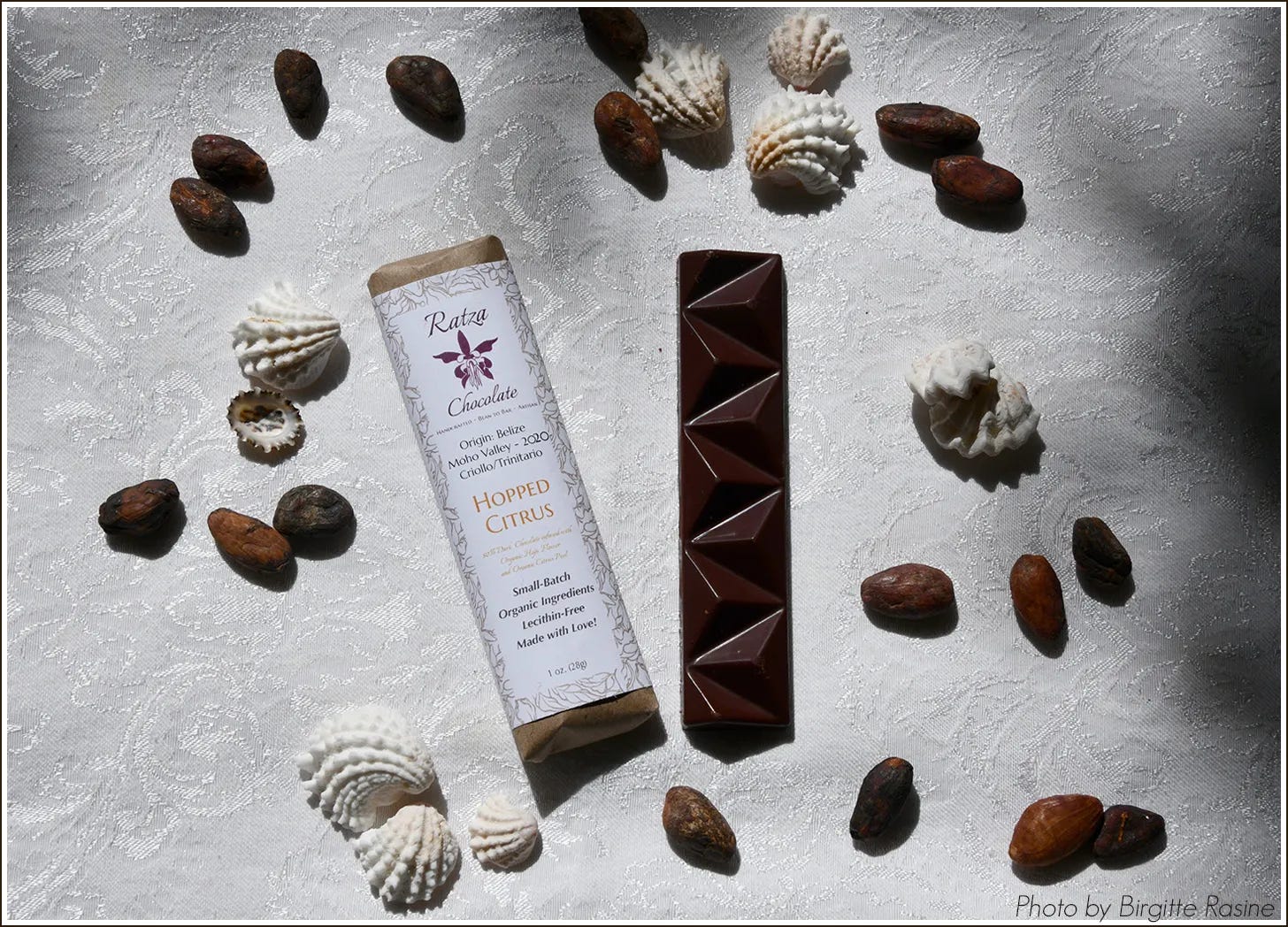
Duly noted :) I think it’s great that you’re also sharing the chocolate judging and tasting side of the work as part of The Cacao Muse. You really offer both a broad and deep exploration of chocolate. What do you most hope people get out of subscribing to The Cacao Muse?
I would like to create a sense of community and a well of knowledge and direct experience of this wondrous food so many of us eat on a regular if not daily basis, and yet know so little about. This is the concept of the library-café I mention on the About page. And I want The Cacao Muse to be very much a multi-way conversation. Not just me sharing research and knowledge and pretty photos. I want to hear from people, answer their questions, share happenings and events in the world of chocolate, and make way for them to share their experiences with chocolate as well. Long-term, I have plans to bring a lot more content and experiences than what you see now, as I’ve been plugged into this industry for some time.
And yes, if people are wondering, I do have plans for actual chocolate tastings! Stay tuned!
Circling back to the beginning—you write about two very different topics on each of these Substacks which is wonderful, but I'm curious if you see any similarities, threads of connection, in these two interests? And how do you balance your work on the two?
Ha, you mean what does chocolate possibly have to do with AI! As outlandish as this may seem, there is a connection. No, ChatGPT didn’t get trained on cacao beans and Bard didn’t digest rivers of flowing chocolate. I’m referring to the nexus of human creativity and well-being and the processes and technologies we invent and produce. When process and technology support and aid our well-being and creativity, we create a virtuous cycle that brings benefits to all involved. However, when process and tech are either designed or operate in conflict with our well-being and creativity, it becomes a vicious spiral downwards, and generates harm rather than good, from our mental to our financial health.
You can see this today with chocolate. Chocolate is a processed food, in the sense that we have always had to make it. Chocolate doesn’t grow on trees; cacao does. We had to figure out how to turn cacao into chocolate. The process is painstaking and complex. But there is a massive difference between the quality craft chocolate that’s sourced responsibly, and the junk candy made with cacao grown in inhumane conditions for the workers and toxic conditions for the forest.
Ditto for generative AI: the technology in itself is an extraordinary feat of engineering and computer science. I think few would dispute that. But what makes all the difference in its impact on us, especially us creators, and our livelihoods and well-being, is how those AI systems are trained and annotated, how they’re manufactured and powered, and how they’re leveraged and monetized.
So we always return to the same first principles of intention and purpose. If your intention is to make a lot of money from selling cacao, your technology and your process will slant toward that objective, and likely create some form of harm or inequity. If your intention is to enable a village in Ivory Coast to benefit from growing cacao, your process will ensure fair wages and fair treatment to the workers and their families. You can apply the same principle to generative AI and just about any product we use today.
Well said. We have covered so much and there’s lots more already for people to explore at The Cacao Muse. What else do you want to make sure that everyone knows?
That chocolate is the real answer to the Ultimate Question of Life, the Universe, and Everything. Not 42. Sorry Doug.
Learn more about The Cacao Muse, including subscription options, here.
If you read this far, perhaps you liked the work. The work does take work. It only continues with support, so please consider subscribing. My annual rate starts at $10 per year.

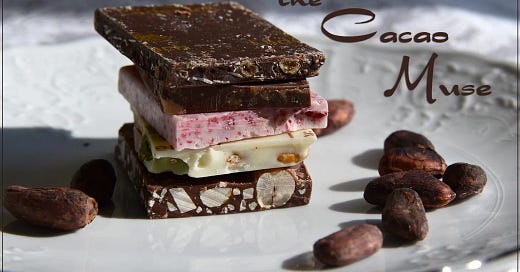




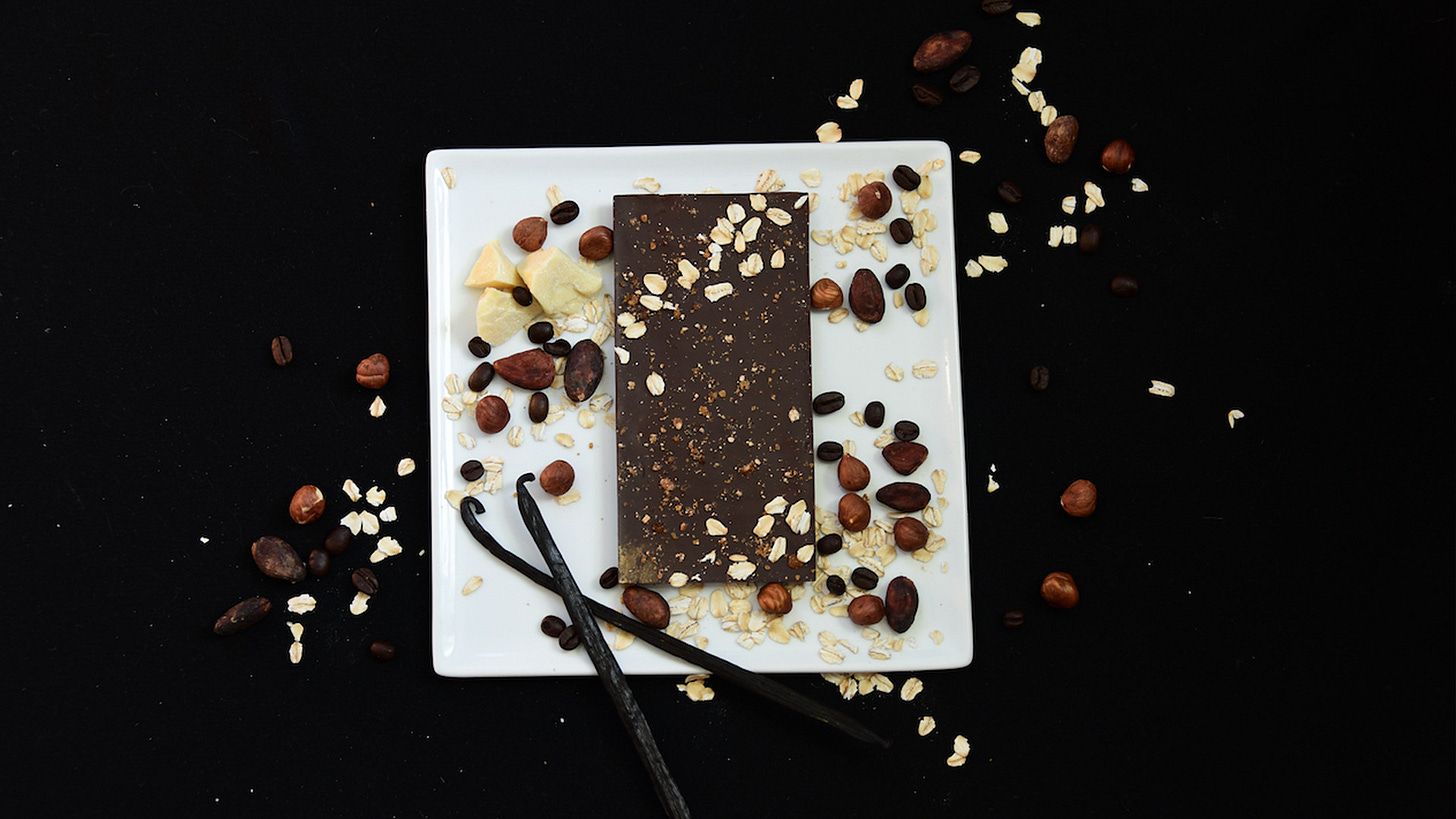
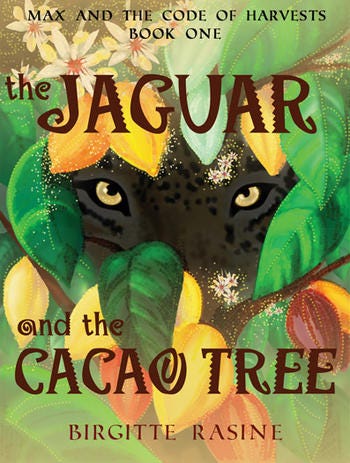
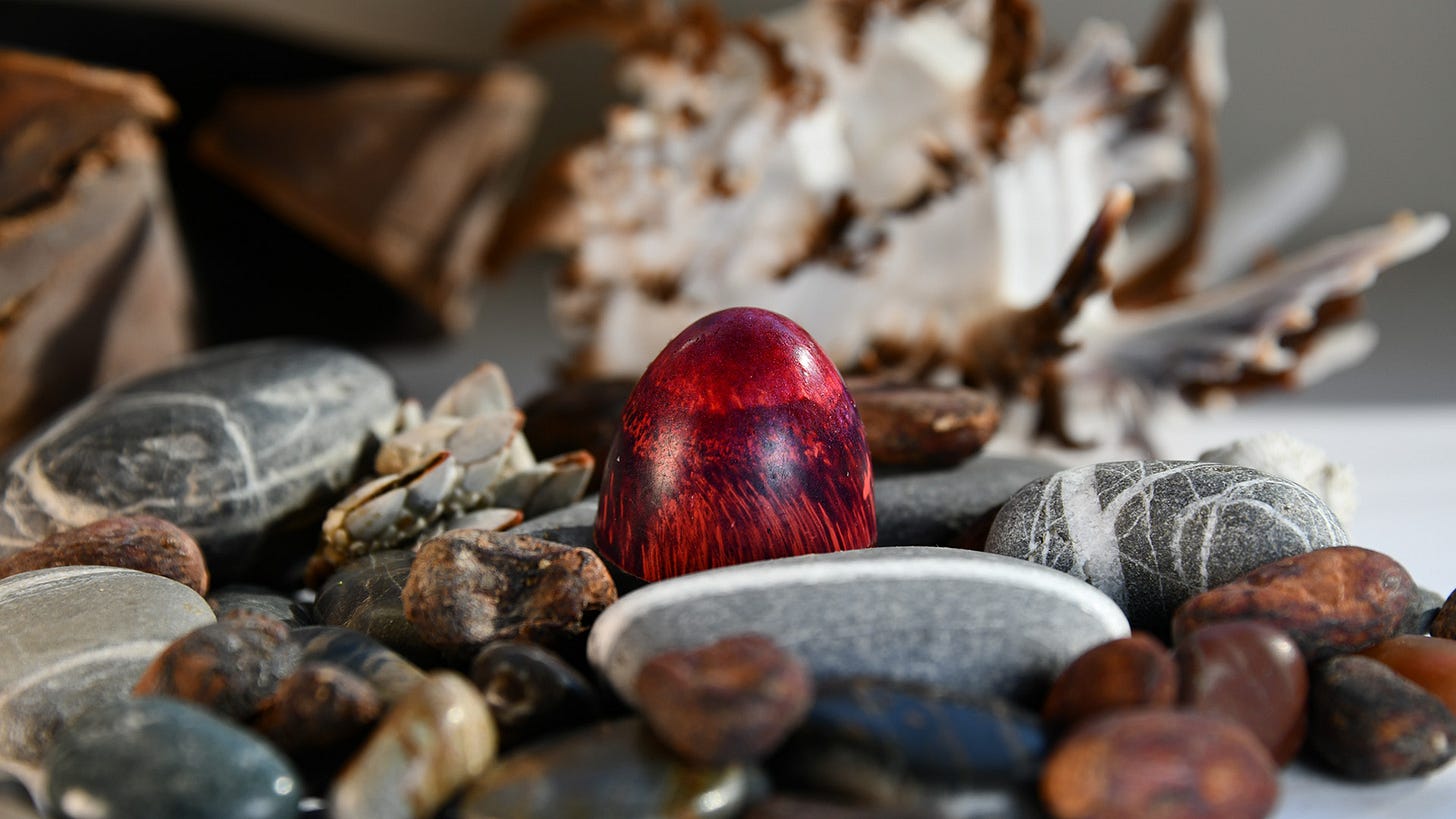

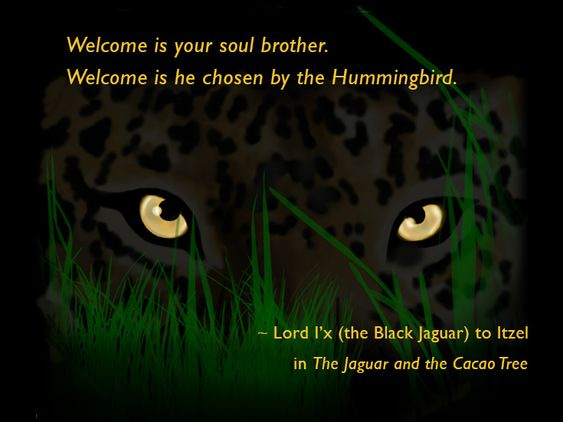
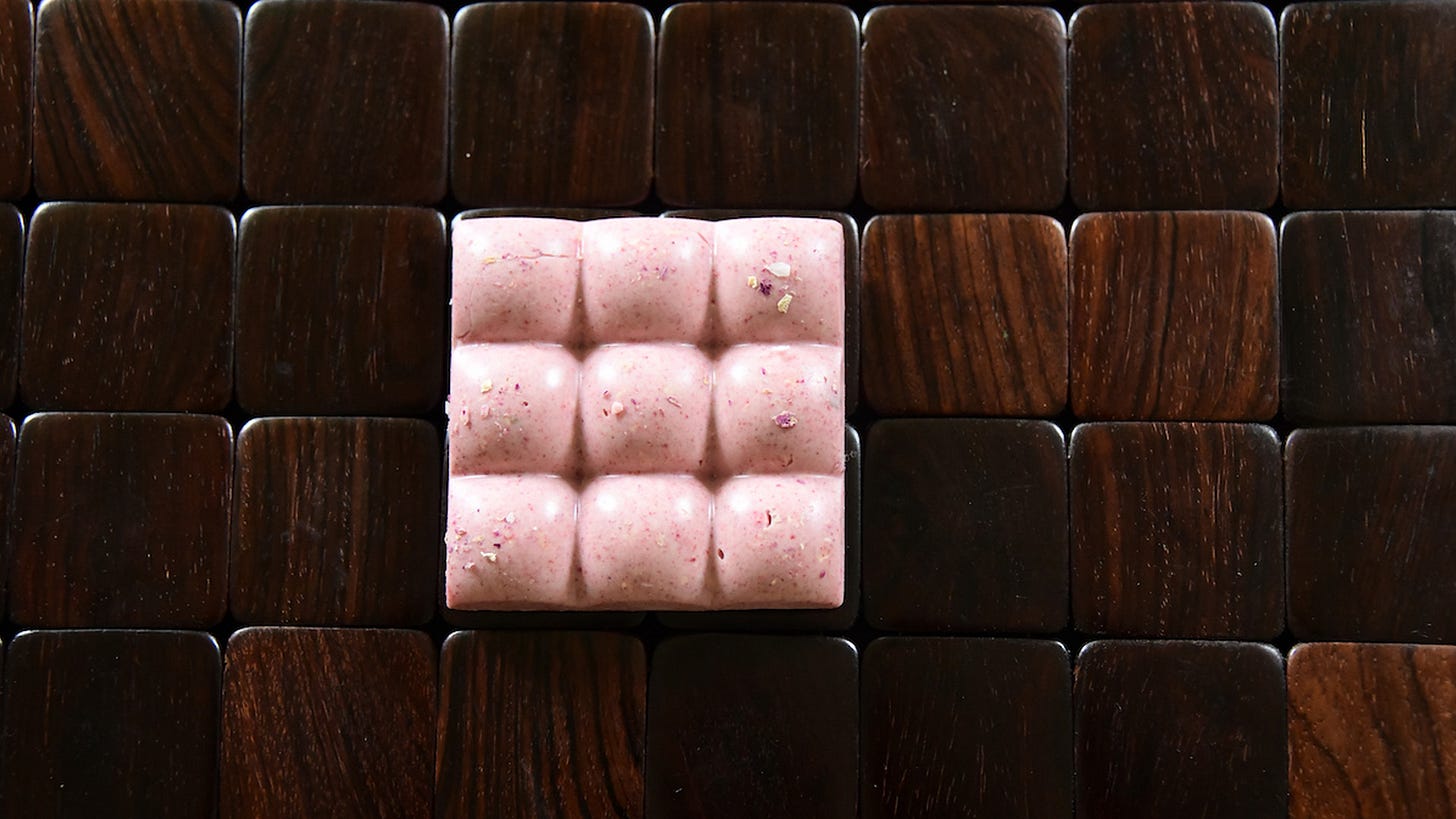

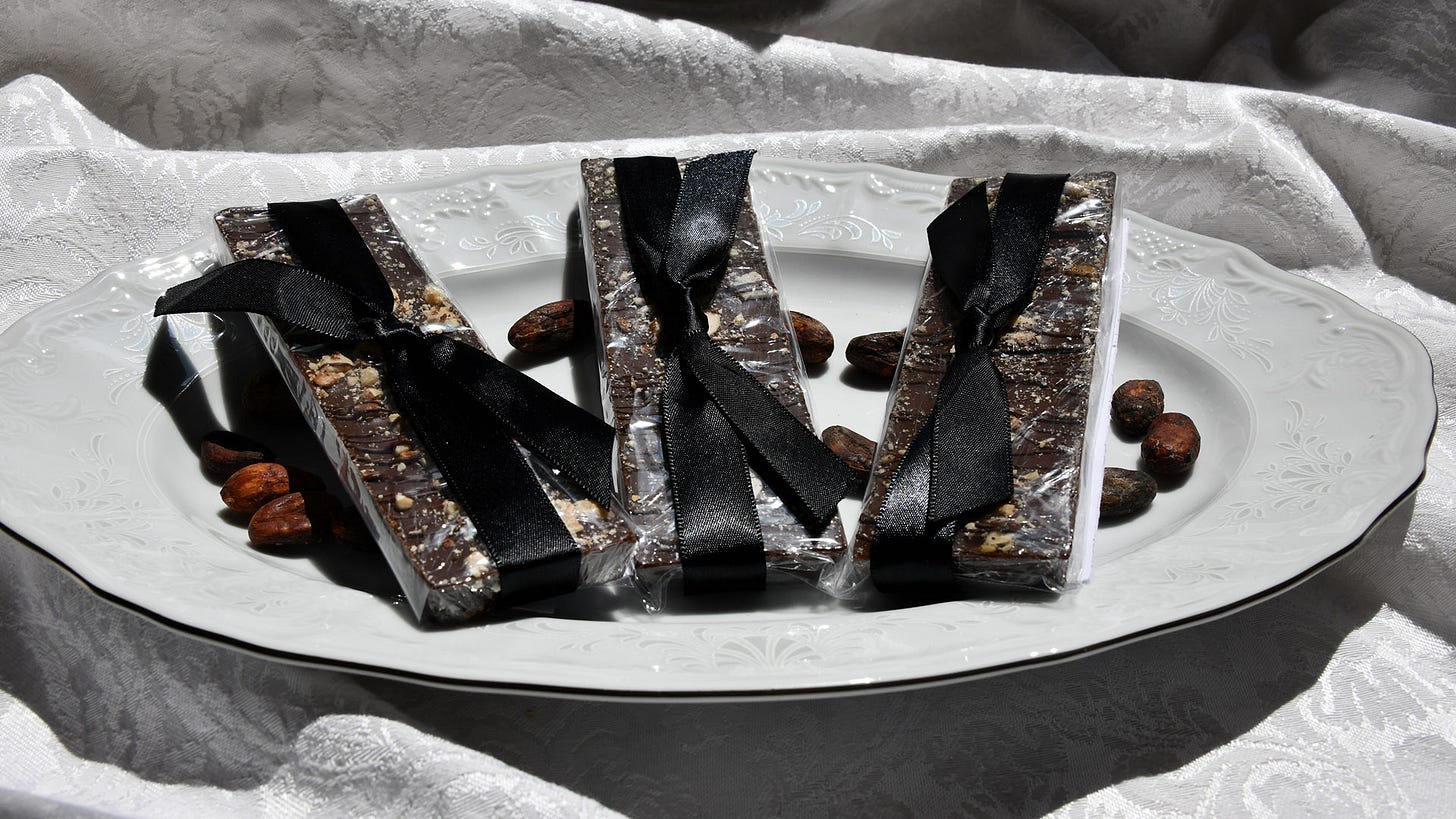
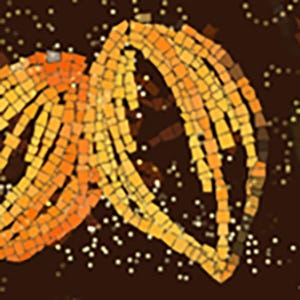
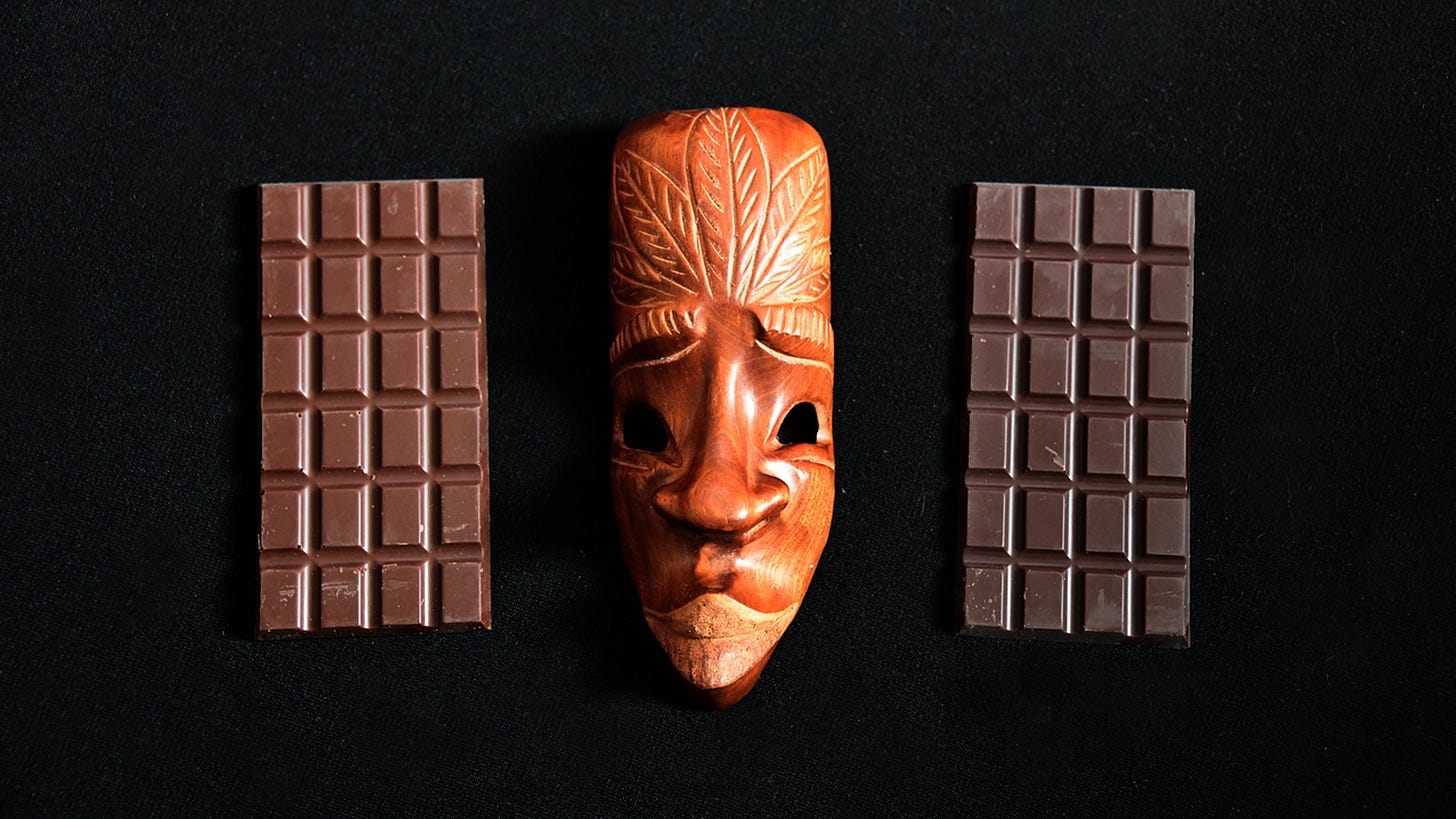
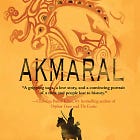
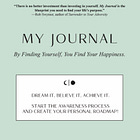

Congratulations to both of you! Birgitte, your book cover art looks great!